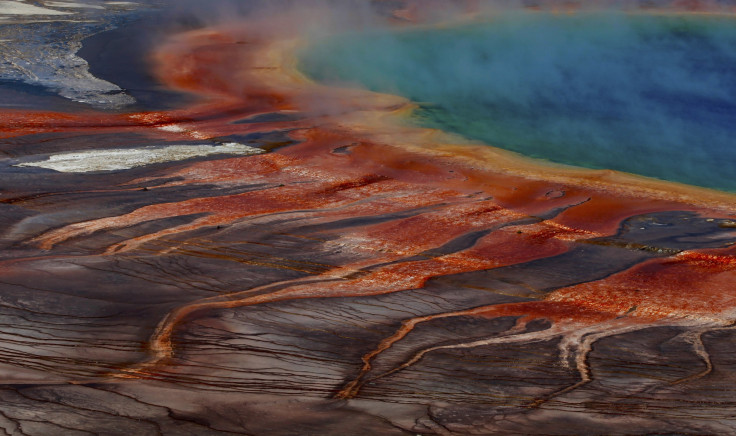What Triggers Supervolcanos? New Study Finds It Can Occur Without An External Trigger

Supervolcanos like the one beneath Yellowstone, one of America's most popular national parks, does not need an external trigger to erupt, a new study says.
According to an experiment conducted by scientists at the European Synchrotron Radiation Facility, or ESRF, in Grenoble, France, the sheer buoyancy of magma pressure alone can lead to the eruption of a supervolcano, contrary to existing belief that such volcanic eruptions are caused by external triggers such as earthquakes.
"Now we know you don't need any extra factor - a supervolcano can erupt due to its enormous size alone," Wim Malfait, lead author of the study, said. “Once you get enough melt, you can start an eruption just like that."
There are more than 10 supervolcanos on Earth including Yellowstone, Lake Toba in Sumatra, Indonesia, and Lake Taupo in New Zealand. When supervolcanos erupt, they can spew more than a thousand cubic kilometers of magma. This is hundred times more than what a normal volcano can throw out, and is enough to bury a large city.
According to the researchers, clues to the size and timing of supervolcano eruptions rest in their size and the pressure of the molten rock within their chambers. To arrive at their conclusion, the scientists reproduced conditions similar to those that exist inside the magma-filled chambers of supervolcanos to understand what could trigger an explosion.
"Temperatures of up to 1700 degrees and pressures of up to 36,000 atmospheres can be reached inside the so-called Paris-Edinburgh press, where speck-sized rock samples are placed between the tips of two tungsten carbide anvils and then heated with a resistive furnace. This special set-up was used to accurately determine the density of the liquid magma over a wide range of pressures and temperatures," Jean-Philippe Perrillat, a scientist and member of the research team, said.
The result of the experiment showed that pressure resulting from the differences in density between solid and liquid magma rock is sufficient in itself to crack more than 10 kilometers of the Earth’s crust above the magma chamber.
"Our research has shown that the pressure is actually large enough for the Earth’s crust to break. The magma penetrating into the cracks will eventually reach the Earth’s surface, even in the absence of water or carbon dioxide bubbles in the magma. As it rises to the surface, the magma will expand violently, which is the well known origin of a volcanic explosion," Malfait said, in the study published in in Nature Geoscience.
Supervolcano eruptions occur rarely, but when they do, they can be catastrophic. The impact of such eruptions on Earth, considered one of the planet's biggest natural disasters, is next only to the impact from a giant asteroid. And, an understanding of the mechanism that triggers supervolcano eruptions would help predict such a disaster, and reduce its impact on people. However, creating a credible mechanism to avert a supervolcano eruption still remains a theoretical concept.
A supervolcano eruption can have a devastating and long-lasting effect on Earth’s climate and ecology as the ash and magma released in an eruption can obscure the sun for several months, if not years, leading to a drastic fall in global temperatures.
The eruption of Mount Pinatubo in the Philippines in 1991, which was a normal volcanic eruption, decreased global temperatures by 0.4 degrees celsius for a few months. In comparison, the prediction in the event of a supervolcano eruption is a 10-degree-celsius drop in temperature spread over 10 years, the study said.
The last supervolcano eruption in Wyoming happened about 640,000 years ago, which resulted in the ejection of more than thousand cubic kilometers of molten rock and ash, creating what today is Yellowstone National Park, according to the U.S. Geological Survey. Indonesia's supervolcano, Lake Toba, is said to have erupted about 75,000 years ago.
© Copyright IBTimes 2025. All rights reserved.






















